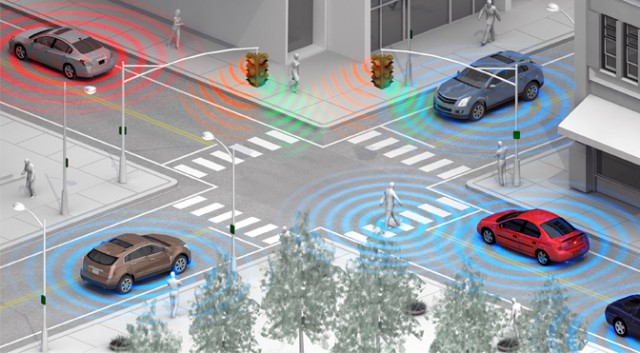Vehicle-to-vehicle and vehicle-to-infrastructure is a recently developed technology with intentions of making traffic more uniform and orderly. Because of human errors, there are obviously many accidents. A lot of the time, people can be seriously injured, or even die, as a result. This new technology would seek to eliminate that almost entirely by opening an avenue of communication between vehicles and infrastructure that would, as a welcome side effect, also result in more efficient transport.
As part of the U.S. Department of Transportation’s Connected Vehicle Safety Pilot Model Deployment Program, conducted by the University of Michigan Transportation Research Institute, General Motors will help drive a critical phase of V2V (vehicle-to-vehicle) and V2I (vehicle-to-infrastructure) by producing eight specially equipped vehicles for a year of real-world testing. This program specifically will determine the effectiveness of V2V and V2I safety technologies at reducing crashes. Analysis of the data could result in a wide-scale deployment V2V technology before the end of the decade.
V2V communication allows vehicles to send and receive from each other basic information such as location, speed and direction of travel. V2I communication shares information about traffic signal phase, road attributes and surface conditions. Each technology has the potential to mitigate traffic collisions and congestion. Together, they can be integrated with active safety features, such as forward collision warning and side blind zone alert, already available on many production cars.
For the V2I portion of the program, 73 lane-miles of Ann Arbor roadway in Michigan have been instrumented with 29 roadside-equipment installations. The V2V vehicles GM is providing use production-viable integrated systems capable of sending and receiving information from other vehicles, and warning drivers when potential for a collision is detected.
The ultimate goal of this program is to specifically provide data of measured system benefits, which can later be used in determining the timeline for the introduction of these technologies into the mainstream. In the long run, they will improve traffic safety and transportation efficiency.



